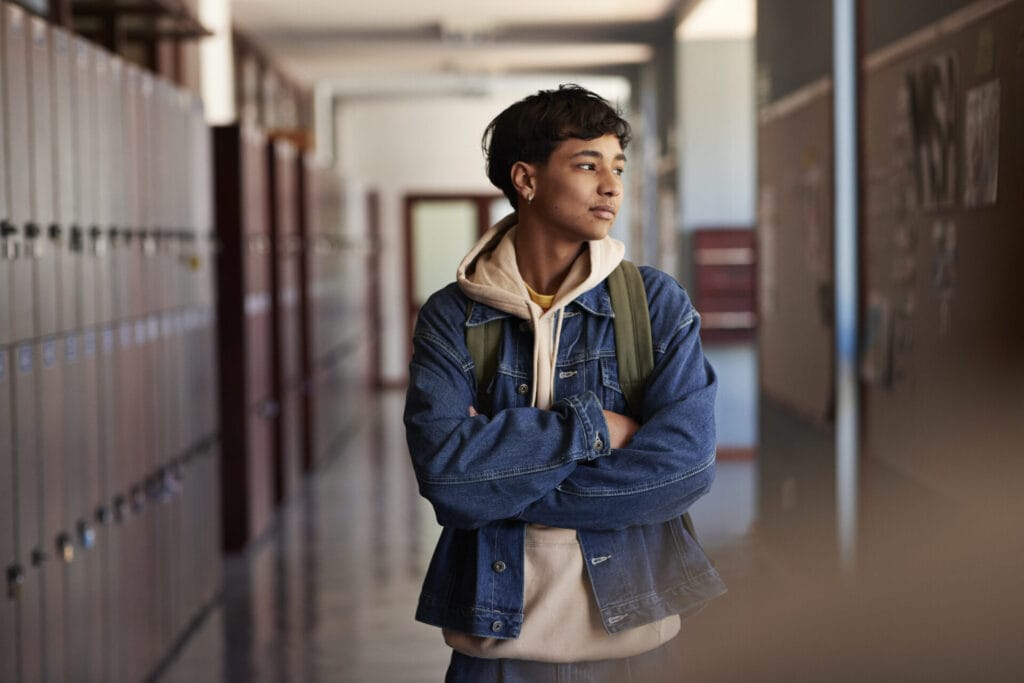This essay was first published in the Bergen, NJ, Record in July 2023.
By Tina Signorelli, Teacher and GSA Adviser, New Jersey
I’m about to begin my 20th year of teaching, including more than a decade as an adviser to our school’s Gender and Sexuality Alliance (GSA). Unfortunately, our community is witnessing how GSAs are next to be targeted by people who claim they are protecting students by injecting politics and disinformation into conversations at school and library boards. I am here to share why GSAs keep students safe, in the students’ own words, from research, and from my observations as a teacher and adviser.
Our mission is simply to provide a safe space for students. We spend meetings learning about local, national and global LGBTQ+ issues. We champion the students’ successes and we comfort them during their struggles. We discuss how to handle an unsupportive family member at Thanksgiving, what colleges might make them feel safest, and how straight members might be better allies, something we could all learn a thing or two about. We plan and run events ranging from the National Day of Silence to a rainbow bake sale, literally sweetening the day of students and staff who participate. We’ve made bulletin boards for important LGBTQ+ dates and milestones, and we’ve remade them when they’ve been torn down. Our town, like many, NEEDS GSA. This is not just my opinion. Research backs this.
Gay Straight Alliances create safer schools for LGBTQ+ students and their allies. Students in schools with GSAs are less likely to hear homophobic remarks in school than students in schools without one. LGBTQ+ students who attend schools with GSAs are less likely to report feeling unsafe. LGBTQ+ students are less likely to miss school when there is a GSA. In fact, LGBTQ+ students in schools with GSAs are significantly more likely to be aware of a supportive adult at school, which is reported to improve grade point averages and impact post-secondary education as compared to LGBTQ+ students who do not. The Board of Education has a duty to support and protect all students and this marginalized community is markedly safer and stronger due to the mere presence of the GSA, whether or not students join and attend.
Like all of my esteemed colleagues over the years, I’ve received many thank-you notes from former students. I’ve appreciated those who said I helped them love reading, of course, and those who shared how important it was to have a safe person and space to be themselves:
“In this town, having a friendly ally around school is super important, and you have helped more gay kids than you realize.”
“Coming out in high school is one of the most terrifying things I’ve ever done. Feeling the support from a teacher was life saving… I remember not feeling judged or threatened by the fact that you knew I was gay.”
“You may never know all the ways that you have saved lives.”
“I am in awe with the impact you have had on this town’s LGBTQ+ community. it is so hard to put into words.”
“Your hard work trying to make everyone’s voices heard does not ever go unnoticed.”
“You bring safety and happiness to an amazing community and I’m so lucky to have been a part of it.”
“Thank you for being a kind person, an ally, and a positive supportive presence. I’m grateful for how much you helped me when I was struggling the most. Thankfully I’m in a much better place now, but I wouldn’t be here without you.”
My heart and memories are full of other ways our GSA inspired safety at school. The captain of the football team, outside my classroom, explaining to his teammates that the Day of Silence was not about gay pride but instead protecting those who have been bullied and harassed, sometimes to death. The GSA member who got up in front of the staff and explained the importance of honoring students’ pronouns. The student who came to me in tears because their parents threatened to throw them out if they tried to identify as gay. The student who ran to my classroom with a friend, neither of them GSA members, because a teacher was using his dead name and he didn’t know what to do, but my student, his friend, knew who to ask for help.
The existence of this club, the fact that students know there is someone who will always hold safe space for them, every other Monday from 2:15-3:15 (and whenever they need me in between), is vital to them and everyone in school. But you don’t have to be a teacher or educational leader to speak up for the health and well-being of students. We need everyone to recognize the needs of vulnerable young people to be seen and accepted so they can grow, learn, and thrive. The safety and success of everyone in our school and throughout the community depends on access to these resources and supporting every student who needs them.













